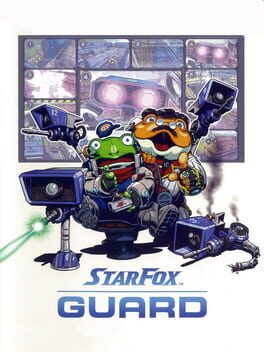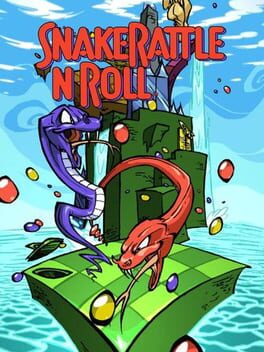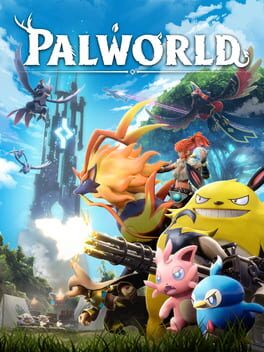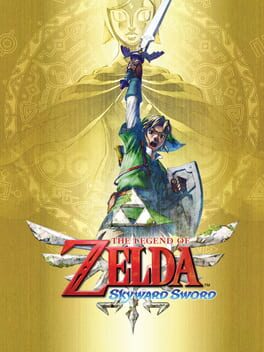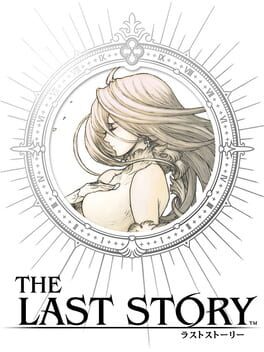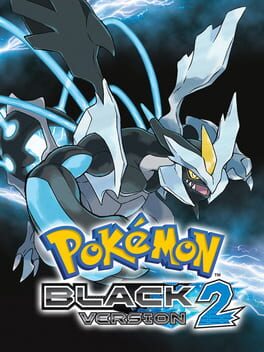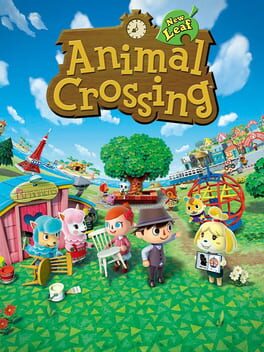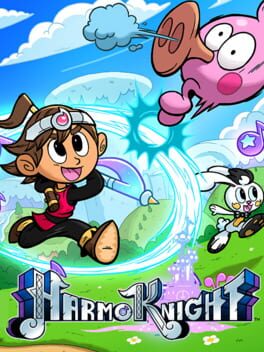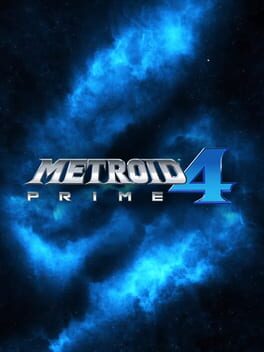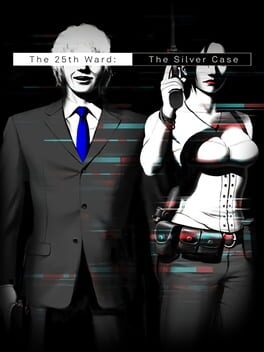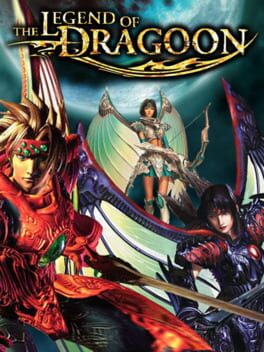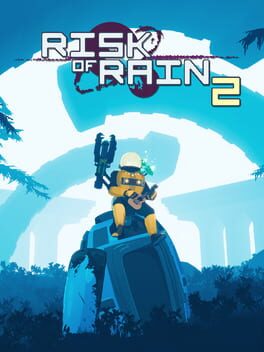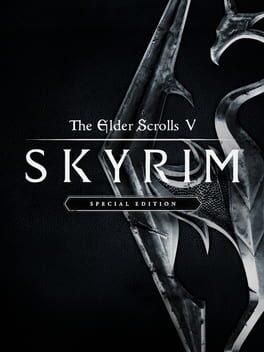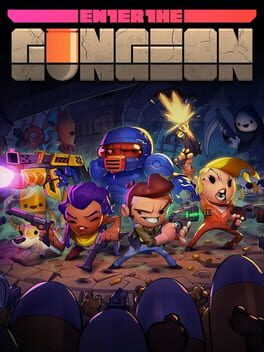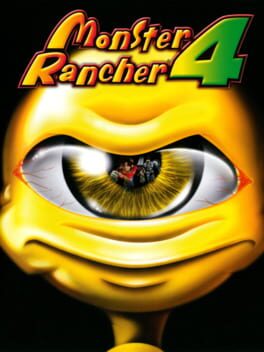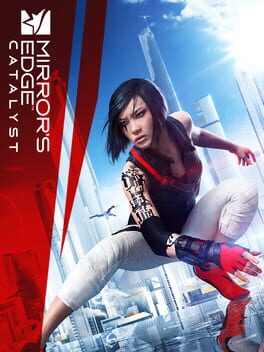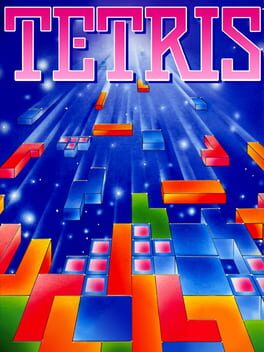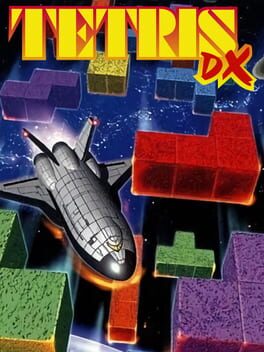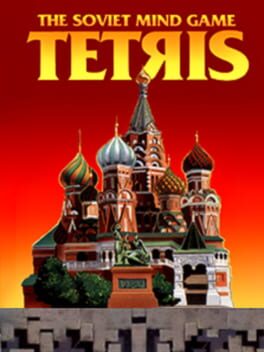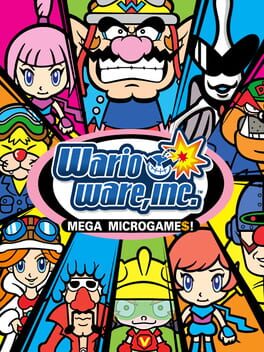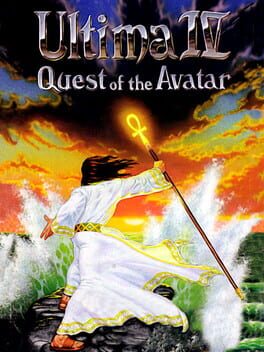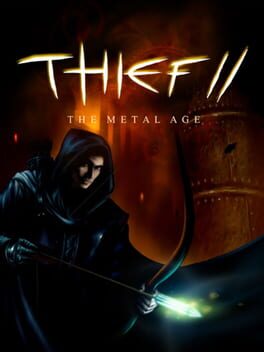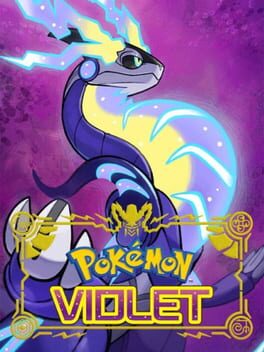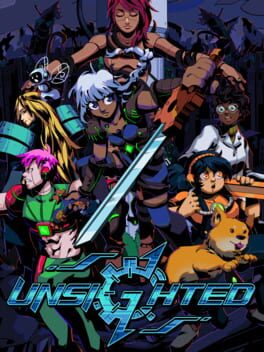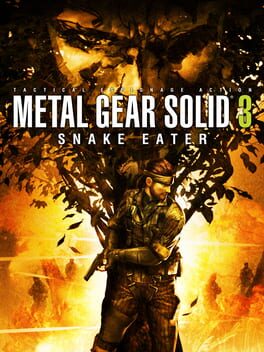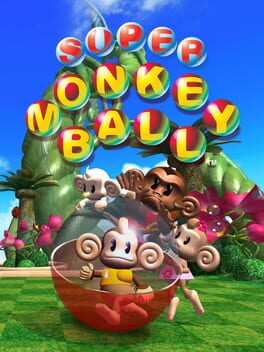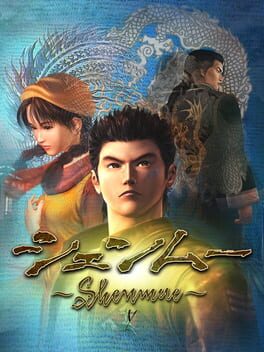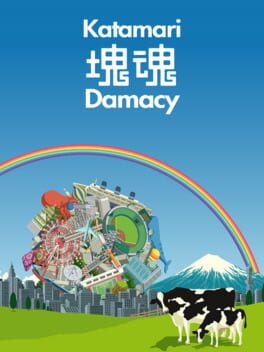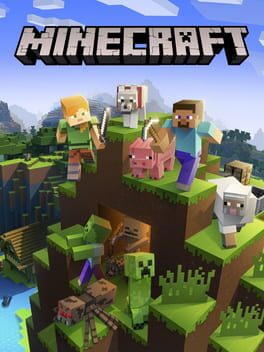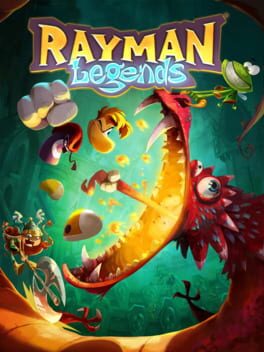Hylianhero777
345 reviews liked by Hylianhero777
NieR Re[in]carnation
2021
This review contains spoilers
first of all it's not a video game. removing the gacha elements only makes this more clear. the only mechanic is Number Big? if number big, you win. if number not big, pay up. in its final pre-cancellation form they let you skip that and in so doing only reveal there was never anything there in the first place, it was alwasy only a series of whale checks in front of that sweet sweet yoko taro lore you crave. the craven cynicism of it all is existentially destructive for the work, as taro's already tiring eccentricities of hiding crucial details in the least accessible of places now become vectors to leverage for the direct exploitation of his audience into a gambling black hole. better hit the pulls so you can upgrade enough bullshit to see the dark memory that reveals the connection to drakengard 3 that makes everything click into place!! don't want to be left behind!!
but that is known. the game is a gacha and more than that it is a bad one even by the exploitative standards of a blighted genre that shouldn't exist, and that's why it's shutting down. nier reincarnation will forever live on as a series of youtube videos where fans can experience the story fairly close to how it was originally intended, and that's more than you can say for japanese exclusive yorha stageplay number squintillion. so how is that?
bad!! very bad!!! the game takes one of the weakest elements of the nier games, the sidequest and weapon stories all having the exact same tragedy monotonously drilled into your skull over and over and make it the entire game. no weiss and kaine bantering to prop all that up with a jrpg party of the greatest oomfs ever pressed to a PS3 disc, no experimental presentation of combat and level design, just storybook tragedies presented at such arch remove you don't even learn the character's names until you check the menu.
it is ludicrous. it is hilarious. there's one where a kid joins the army to get revenge on the enemy commander who killed his parents, only to as he kills him discover with zero forshdaowing that the commander is his real father and his parents kidnapped him as a child. there's one where a perfect angel little girl's father is beaten to death by his own friends so she runs home crying to her mother, who is in the middle of cheating on him, and is like sweet that owns and leaves lmao. they do the who do you think gave you this heart copypasta!!! and you'd think with such ridiculous material that it would be played with a coens-esque A Serious Man type wry touch, but it isn't at all, it's thuddingly earnest throughout as every tragic story plays out to overwrought voice acting and a haunting sad piano.
it is impossible to take seriously, and by the time the twelfth playable character has experienced a tragic loss and succumbed to the anime nihlism of I'll Kill Them All, another more fundemental question arises: what does all this lore actually give you, as a function of storytelling? the yokoverse is an intricate and near impossible thing, spanning multiple decades and every kind of storytelling medium imaginable, and reincarnation references damn near every single page of it, grasping onto the whole thing and framing it as a sprawling multiverse of human conflict across infinite pasts and infinite futures, with decades of mysteries to unravel and connections to make and characters to ponder and: why? for the exact same No Matter How Bad It Gets, You Can't Give Up On Hope ending that every anime RPG has? that automata already did? the plot is vast and intricate but the themes are narrow and puddle deep.
the more nier blows itself out to greater and greater scales the smaller it feels. in earthbound you fight the same ultimate nihlism of a the universe and then you walk back home again. and you say goodbye to your friends. and you call your dad. and it makes me cry like a fucking baby every time. the original nier, for all its faults, had that specificity. that sense of a journey with characters you loved that overcame the generic nature of its larger plot. here, you heal all the tragedies and fix all the timelines and everyone continues to live inside the infinite quantum simulations that will never end as you strive to find a way past the cyclical apocalypses past and future that repeat for all eternity, and i feel absolutely nothing. a world of endless content and no humanity. how tragic. how so very like nier.
but that is known. the game is a gacha and more than that it is a bad one even by the exploitative standards of a blighted genre that shouldn't exist, and that's why it's shutting down. nier reincarnation will forever live on as a series of youtube videos where fans can experience the story fairly close to how it was originally intended, and that's more than you can say for japanese exclusive yorha stageplay number squintillion. so how is that?
bad!! very bad!!! the game takes one of the weakest elements of the nier games, the sidequest and weapon stories all having the exact same tragedy monotonously drilled into your skull over and over and make it the entire game. no weiss and kaine bantering to prop all that up with a jrpg party of the greatest oomfs ever pressed to a PS3 disc, no experimental presentation of combat and level design, just storybook tragedies presented at such arch remove you don't even learn the character's names until you check the menu.
it is ludicrous. it is hilarious. there's one where a kid joins the army to get revenge on the enemy commander who killed his parents, only to as he kills him discover with zero forshdaowing that the commander is his real father and his parents kidnapped him as a child. there's one where a perfect angel little girl's father is beaten to death by his own friends so she runs home crying to her mother, who is in the middle of cheating on him, and is like sweet that owns and leaves lmao. they do the who do you think gave you this heart copypasta!!! and you'd think with such ridiculous material that it would be played with a coens-esque A Serious Man type wry touch, but it isn't at all, it's thuddingly earnest throughout as every tragic story plays out to overwrought voice acting and a haunting sad piano.
it is impossible to take seriously, and by the time the twelfth playable character has experienced a tragic loss and succumbed to the anime nihlism of I'll Kill Them All, another more fundemental question arises: what does all this lore actually give you, as a function of storytelling? the yokoverse is an intricate and near impossible thing, spanning multiple decades and every kind of storytelling medium imaginable, and reincarnation references damn near every single page of it, grasping onto the whole thing and framing it as a sprawling multiverse of human conflict across infinite pasts and infinite futures, with decades of mysteries to unravel and connections to make and characters to ponder and: why? for the exact same No Matter How Bad It Gets, You Can't Give Up On Hope ending that every anime RPG has? that automata already did? the plot is vast and intricate but the themes are narrow and puddle deep.
the more nier blows itself out to greater and greater scales the smaller it feels. in earthbound you fight the same ultimate nihlism of a the universe and then you walk back home again. and you say goodbye to your friends. and you call your dad. and it makes me cry like a fucking baby every time. the original nier, for all its faults, had that specificity. that sense of a journey with characters you loved that overcame the generic nature of its larger plot. here, you heal all the tragedies and fix all the timelines and everyone continues to live inside the infinite quantum simulations that will never end as you strive to find a way past the cyclical apocalypses past and future that repeat for all eternity, and i feel absolutely nothing. a world of endless content and no humanity. how tragic. how so very like nier.
F-Zero X
1998
Unmatched in the field of causing involuntary bodily responses in the player, the difficulty of F-Zero X itself’s exceeded only by that of trying not to squirm in your chair as you (un)successfully round corners at >1500km/h, bump rival racers off the track while trying to avoid speeding headlong into the abyss yourself or snatch first place out of an increasingly tenuous situation just as a guitar solo kicks in like it’s cheering you on.
The constant multisensory tug of war comprising every race’s brought about in large part thanks to a significant emphasis on tracks’ newfound verticality, enabled by one of the N64’s relatively unsung (though no less impactful) series-first forays into 3D, but it wouldn’t be complete without the mechanics themselves getting a makeover too. What’s probably the most crucial example of this is that boosting’s gone from its own independent resource, as in the first F-Zero, to something you now have to sacrifice your vehicle’s health to use. It’s streamlining at its finest; races rarely play out the same way because there’s no longer a guarantee of either you or your competitors being able to boost upon the completion of each lap, it’s inherently riskier to use but with greater potential reward due to the momentum gained from it carrying over into slopes or airtime, and it paves the way for strategies and decision-making which weren’t really present before. Will you have a comfortable amount of health left for the next lap if you boost partway through the healing zone? Are you gonna do without healing altogether to go for gold and beeline for the boost pad between them instead? Boosting up this hill could rocket you ahead of the crowd, but is your health and the geometry ahead sufficient for a safe landing? With how little time you have to make up your mind, each race leaves your frontal lobe as sweaty as your palms.
All of this in turn has the knock-on effect of enhancing the death race concept at the heart of F-Zero, brought to the forefront by and intertwined with the addition of attacks you and your opponents’ vehicles can perform. At the cost of momentarily decelerating, you can either horizontally ram into other vehicles or spin to win, stalling whoever you hit for the most critical of split seconds and dealing damage proportional to each party’s speed and/or proximity to walls. How smartly this is incentivised becomes increasingly apparent as you ramp up the difficulty and other racers’ AI becomes accordingly aggressive – to come out on top on Expert or above, you pretty much have to kill your designated rival at least once both to broaden your own margin of error and halt their accruement of points, the health it grants you being similarly precious given how often you’ll be boosting. On a less tangible level, there are in general few outlets for gamer malice so cathartic as hearing a series of brrrrrings sound out as you position yourself for a double kill, nevermind doing so by rendering Fox McCloud an orphan in the opening seconds via the world’s least ethically sound game of pinball.
While the actual Death Race mode itself’s a bit anaemic, having only a single track (albeit one unique to it) in which other racers mind their own business instead of trying to bump you off too, it’s nonetheless a useful stomping ground for practicing these mechanics and is balanced out by more substantial post-game unlocks. My favourite racer doesn’t become playable until after the credits roll, for one thing, but the main draw in this regard’s the X Cup and its randomised tracks. Even if it seemingly can’t generate loop-de-loops, cylinders or steep vertical inclines in general, the layouts still manage to become chaotic enough and unlike any of the handcrafted ones to the point that you’ll invariably want to give it at least a few spins. “Ahead of its time” is a phrase I typically don’t like, since the way it’s often used feeds into the idea that new = inherently better and rarely references any actual points of comparison. That said, it feels appropriate in this case when you take into consideration the relative prominence of roguelike side modes and/or DLCs with similar emphasis on procedural generation that’ve crept their way into multiple major releases in the past couple of console gens – the people are crying out for what this game essentially had as a free bonus when I was still being wheeled about in a pram.
As much can be said of F-Zero X in general. Beyond its intentional minimisation of graphics exemplifying the uncanny foresight of Nintendo’s president at the time, it seems as if must have been on the minds of the team behind Mario Kart 8 (currently the second-highest selling first party title ever) to some extent given not just the appearance of both Mute City and Big Blue in it, but also the conceptual overlap between its anti-grav segments and X’s dizzying track designs. Tighten your frame of reference to just its own series and even more recent evidence of how rock solid these mechanics are presents itself in the form of F-Zero 99; while its Skyway and titular battle royale idea help carve out its own more accessible, comparably well-considered spin, it’s also simultaneously a fusion of the first game’s assets with X’s systems. In short, there’s at least a few reverberations of how much this game gets right still being felt, as well as of how timeless its appeal remains, enough so to be more digestible to today’s players than you’d initially assume. If and/or when they decide to prove as much again by taking another crack at the formula, hopefully it won’t be set upon by quite as many people who’ve never played any of them for not being the “proper” franchise revival they were definitely clamouring for.
This is all to say: don’t be intimidated by its steep learning curve and give it a whirl, because the F stands for fun and there are too few games which let you do something like this completely by accident. Like its announcer whose garbled voice gave my brother shellshock says, it’s way out in front.
The constant multisensory tug of war comprising every race’s brought about in large part thanks to a significant emphasis on tracks’ newfound verticality, enabled by one of the N64’s relatively unsung (though no less impactful) series-first forays into 3D, but it wouldn’t be complete without the mechanics themselves getting a makeover too. What’s probably the most crucial example of this is that boosting’s gone from its own independent resource, as in the first F-Zero, to something you now have to sacrifice your vehicle’s health to use. It’s streamlining at its finest; races rarely play out the same way because there’s no longer a guarantee of either you or your competitors being able to boost upon the completion of each lap, it’s inherently riskier to use but with greater potential reward due to the momentum gained from it carrying over into slopes or airtime, and it paves the way for strategies and decision-making which weren’t really present before. Will you have a comfortable amount of health left for the next lap if you boost partway through the healing zone? Are you gonna do without healing altogether to go for gold and beeline for the boost pad between them instead? Boosting up this hill could rocket you ahead of the crowd, but is your health and the geometry ahead sufficient for a safe landing? With how little time you have to make up your mind, each race leaves your frontal lobe as sweaty as your palms.
All of this in turn has the knock-on effect of enhancing the death race concept at the heart of F-Zero, brought to the forefront by and intertwined with the addition of attacks you and your opponents’ vehicles can perform. At the cost of momentarily decelerating, you can either horizontally ram into other vehicles or spin to win, stalling whoever you hit for the most critical of split seconds and dealing damage proportional to each party’s speed and/or proximity to walls. How smartly this is incentivised becomes increasingly apparent as you ramp up the difficulty and other racers’ AI becomes accordingly aggressive – to come out on top on Expert or above, you pretty much have to kill your designated rival at least once both to broaden your own margin of error and halt their accruement of points, the health it grants you being similarly precious given how often you’ll be boosting. On a less tangible level, there are in general few outlets for gamer malice so cathartic as hearing a series of brrrrrings sound out as you position yourself for a double kill, nevermind doing so by rendering Fox McCloud an orphan in the opening seconds via the world’s least ethically sound game of pinball.
While the actual Death Race mode itself’s a bit anaemic, having only a single track (albeit one unique to it) in which other racers mind their own business instead of trying to bump you off too, it’s nonetheless a useful stomping ground for practicing these mechanics and is balanced out by more substantial post-game unlocks. My favourite racer doesn’t become playable until after the credits roll, for one thing, but the main draw in this regard’s the X Cup and its randomised tracks. Even if it seemingly can’t generate loop-de-loops, cylinders or steep vertical inclines in general, the layouts still manage to become chaotic enough and unlike any of the handcrafted ones to the point that you’ll invariably want to give it at least a few spins. “Ahead of its time” is a phrase I typically don’t like, since the way it’s often used feeds into the idea that new = inherently better and rarely references any actual points of comparison. That said, it feels appropriate in this case when you take into consideration the relative prominence of roguelike side modes and/or DLCs with similar emphasis on procedural generation that’ve crept their way into multiple major releases in the past couple of console gens – the people are crying out for what this game essentially had as a free bonus when I was still being wheeled about in a pram.
As much can be said of F-Zero X in general. Beyond its intentional minimisation of graphics exemplifying the uncanny foresight of Nintendo’s president at the time, it seems as if must have been on the minds of the team behind Mario Kart 8 (currently the second-highest selling first party title ever) to some extent given not just the appearance of both Mute City and Big Blue in it, but also the conceptual overlap between its anti-grav segments and X’s dizzying track designs. Tighten your frame of reference to just its own series and even more recent evidence of how rock solid these mechanics are presents itself in the form of F-Zero 99; while its Skyway and titular battle royale idea help carve out its own more accessible, comparably well-considered spin, it’s also simultaneously a fusion of the first game’s assets with X’s systems. In short, there’s at least a few reverberations of how much this game gets right still being felt, as well as of how timeless its appeal remains, enough so to be more digestible to today’s players than you’d initially assume. If and/or when they decide to prove as much again by taking another crack at the formula, hopefully it won’t be set upon by quite as many people who’ve never played any of them for not being the “proper” franchise revival they were definitely clamouring for.
This is all to say: don’t be intimidated by its steep learning curve and give it a whirl, because the F stands for fun and there are too few games which let you do something like this completely by accident. Like its announcer whose garbled voice gave my brother shellshock says, it’s way out in front.
Star Fox Guard
2016
Aside from Nintendo Land and possibly Super Mario Maker, Star Fox Guard is the first Wii U game I’ve played that actually feels designed for the gamepad. I'm not usually a fan of the 'Tower Defense' genre but the second screen creates a level of engagement and tension to it here beyond just setting up turrets. With how quick and bulky the enemies can be, both strategy and reflexes come in to play with placing and switching the cameras. The unusual control scheme makes it nearly impossible to port to other systems but hopefully it gets recognition some day as a unique take on the RTS format.
You know, after reviewing a good handful of the older titles in Rare/Ultimate Play the Game’s catalog, I have come to a bit of a stunning revelation… they weren’t really that good. Not to say that all of them are flat-out terrible, or that there aren’t at least one or two good games from this part of their history, such as with Battletoads and Jetpac, but a lot of them don’t really hold up at all, most of them feeling like they are prioritizing concepts over gameplay, and yes, while these concepts are creative, the gameplay isn’t enough to keep that concept or my interest afloat for too long. It is to be expected that not all of a company’s titles will be winners, but considering this is the same company that brought us titles like Donkey Kong Country, Banjo-Kazooie, and Conker’s Bad Fur Day later down the line, it was surprising to say the least. But now, I completely expect these titles to be pretty bad, such as with today’s subject, Snake Rattle ‘n’ Roll.
There is an interesting idea here, creating an isometric platformer inspired by games like Marble Madness, and considering that Rare helped port that game to the NES, they had plenty of experience making a game like this. Unfortunately though, some ideas like this should stay on the drawing board rather then being fully executed, because I didn’t have a good time with this game at all. It is admirable, what they managed to do here, but it is more frustrating than anything else, pretty repetitive, and it has some pretty irritating gameplay choices that don’t make me wanna replay it ever again.
I’m not even sure if there is a story or not, but it is primarily just a bunch of snake shenanigans, the graphics are good, with the snakes and “enemies” looking good, but the environments are pretty boring to look at, the music is pretty good, but that is to be expected from a Rare game, the control is an abomination, which we will get to later, and the gameplay is simple enough, while adding a little bit of challenge in there to make the player quick to move and react… at a price.
The game is an isometric puzzle platformer, where you take control of either Rattle or Roll, go through a set of simple, yet vast levels, defeat any kind of hostile obstacle that stands in your way, gather items and points along the way, and swallow as many pink or yellow balls as you can to extend your body, ring the bell to open the exit, and get on out of there… yeah, this game is kinda weird. Again though, like I mentioned earlier, it is pretty unique to stand out amongst either titles at the time, and there weren’t too many other isometric games, so does make it more appealing. Not to mention, the fact that the game isn’t too complicated or deep, coupled with how the game isn’t that long at all, makes it somewhat appealing.
That being said, this all comes crashing down with the implementation of the terrain and the controls. First and foremost, since this is an isometric platformer on the NES, you can imagine how confusing and difficult it would be to get used to. Sure, it isn’t that confusing to get used to, but when you pair it with the environments that you move around, alongside the depth perception which makes things much harder then they need to be, it makes playing through this game extremely damn frustrating. Not impossible, but really annoying.
And speaking of which, the terrain you have to platform around is also just as guilty in making the game frustrating as the controls are. I have already mentioned how the depth perception is a large hindrance on the player, but not to mention how it is never to clear not only where you are supposed to jump next to progress, but also HOW you are supposed to jump from one platform to another. This is especially aggravating when later levels implement ice physics and cliffsides, which, again, paired with the ass controls, makes making these jumps towards the goals seem almost impossible, with you needing god-like precision to jump, direct yourself towards the platform, and making sure to not shoot yourself off of the ledge in the process. Thankfully, I was using Rare Replay to play through this, like I have done with most of the old Rare titles I have been covering, but I can’t even imagine what trying to beat this on the actual hardware would be like. Probably wouldn’t even get past Level 2.
With all that being said though, I think we have ourselves another Cobra Triangle situation with this game, in where it is only enjoyable through short bursts and nothing more. If you try playing through it in one sitting, like I did, or you spend too long on it, you are gonna end up hating this game like I did. And again, this type of approach to a game like this would work wonderfully if this was an endless arcade game, but since it is a beatable NES game, that makes it a completely different story. I didn’t even mention the presence of fall damage in the game, or how the final boss is literally just a regular enemy that you have to hit, like, five million times in order to beat, but I think you all get it at this point.
Overall, while being yet another impressive experiment from the minds at Rare, the execution of said experiment leaves a lot to be desired, and is definitely not something I will look back upon fondly. Other people would probably get a lot more enjoyment out of this type of game, but seeing as how I have a pet peeve over terrible control in video games (which I have made VERY clear in previous reviews), this isn’t going to be one I will ever consider playing again………. But hey, it did get a sequel, so I will have to play through it eventually, won’t I? Yeah right, I’d rather have a snake poison me with its venom, so I can end the pain quicker.
Game #274
There is an interesting idea here, creating an isometric platformer inspired by games like Marble Madness, and considering that Rare helped port that game to the NES, they had plenty of experience making a game like this. Unfortunately though, some ideas like this should stay on the drawing board rather then being fully executed, because I didn’t have a good time with this game at all. It is admirable, what they managed to do here, but it is more frustrating than anything else, pretty repetitive, and it has some pretty irritating gameplay choices that don’t make me wanna replay it ever again.
I’m not even sure if there is a story or not, but it is primarily just a bunch of snake shenanigans, the graphics are good, with the snakes and “enemies” looking good, but the environments are pretty boring to look at, the music is pretty good, but that is to be expected from a Rare game, the control is an abomination, which we will get to later, and the gameplay is simple enough, while adding a little bit of challenge in there to make the player quick to move and react… at a price.
The game is an isometric puzzle platformer, where you take control of either Rattle or Roll, go through a set of simple, yet vast levels, defeat any kind of hostile obstacle that stands in your way, gather items and points along the way, and swallow as many pink or yellow balls as you can to extend your body, ring the bell to open the exit, and get on out of there… yeah, this game is kinda weird. Again though, like I mentioned earlier, it is pretty unique to stand out amongst either titles at the time, and there weren’t too many other isometric games, so does make it more appealing. Not to mention, the fact that the game isn’t too complicated or deep, coupled with how the game isn’t that long at all, makes it somewhat appealing.
That being said, this all comes crashing down with the implementation of the terrain and the controls. First and foremost, since this is an isometric platformer on the NES, you can imagine how confusing and difficult it would be to get used to. Sure, it isn’t that confusing to get used to, but when you pair it with the environments that you move around, alongside the depth perception which makes things much harder then they need to be, it makes playing through this game extremely damn frustrating. Not impossible, but really annoying.
And speaking of which, the terrain you have to platform around is also just as guilty in making the game frustrating as the controls are. I have already mentioned how the depth perception is a large hindrance on the player, but not to mention how it is never to clear not only where you are supposed to jump next to progress, but also HOW you are supposed to jump from one platform to another. This is especially aggravating when later levels implement ice physics and cliffsides, which, again, paired with the ass controls, makes making these jumps towards the goals seem almost impossible, with you needing god-like precision to jump, direct yourself towards the platform, and making sure to not shoot yourself off of the ledge in the process. Thankfully, I was using Rare Replay to play through this, like I have done with most of the old Rare titles I have been covering, but I can’t even imagine what trying to beat this on the actual hardware would be like. Probably wouldn’t even get past Level 2.
With all that being said though, I think we have ourselves another Cobra Triangle situation with this game, in where it is only enjoyable through short bursts and nothing more. If you try playing through it in one sitting, like I did, or you spend too long on it, you are gonna end up hating this game like I did. And again, this type of approach to a game like this would work wonderfully if this was an endless arcade game, but since it is a beatable NES game, that makes it a completely different story. I didn’t even mention the presence of fall damage in the game, or how the final boss is literally just a regular enemy that you have to hit, like, five million times in order to beat, but I think you all get it at this point.
Overall, while being yet another impressive experiment from the minds at Rare, the execution of said experiment leaves a lot to be desired, and is definitely not something I will look back upon fondly. Other people would probably get a lot more enjoyment out of this type of game, but seeing as how I have a pet peeve over terrible control in video games (which I have made VERY clear in previous reviews), this isn’t going to be one I will ever consider playing again………. But hey, it did get a sequel, so I will have to play through it eventually, won’t I? Yeah right, I’d rather have a snake poison me with its venom, so I can end the pain quicker.
Game #274
A very, very good update to an already great puzzle platformer. This version does have some problems though. The hurtboxes for Shy Guys seem to be a bit messed up - it's not uncommon to jump onto one and somehow die - and this is especially prominent in the new icy world.
Speaking of: the new levels are so much worse than the others in the game. They have neat ideas but they are not executed well at all. The main reason is that the ice physics (and particularly Mario's weird spin jump) don't feel like they were properly thought out. They might work well like this in a 2D platformer but these levels are usually barely larger than a single screen; the DK boss fight using this gimmick makes it especially apparent how much of an issue this weird skating jump doesn't fit into the slower, more-methodical movement system of the rest of the game.
It's a stark reminder how Nintendo Software Technology hasn't been allowed to make a new game in over a decade besides the other Mario vs. Donkey Kong games that nobody cared about and some crossword things on the 3DS. Hopefully they'll be allowed to make new games at some point again.
Speaking of: the new levels are so much worse than the others in the game. They have neat ideas but they are not executed well at all. The main reason is that the ice physics (and particularly Mario's weird spin jump) don't feel like they were properly thought out. They might work well like this in a 2D platformer but these levels are usually barely larger than a single screen; the DK boss fight using this gimmick makes it especially apparent how much of an issue this weird skating jump doesn't fit into the slower, more-methodical movement system of the rest of the game.
It's a stark reminder how Nintendo Software Technology hasn't been allowed to make a new game in over a decade besides the other Mario vs. Donkey Kong games that nobody cared about and some crossword things on the 3DS. Hopefully they'll be allowed to make new games at some point again.
Initially felt inclined to rate The Lost Crown slightly lower due to some minor annoyances brought about by glitches, but by the end, I realised it represents too much of what I want out of this industry to lowball it. This game’s not just a welcome franchise revival or a showcase of a big publisher’s willingness to get experimental, it’s equally a reminder that not enough people are aware of what consistently great developers Ubisoft Montpellier are, an exercise in hardcore Indo-Persian frisbeeing, a vindication of Warrior Within enjoyers and – if you ask me – the single best search-‘em-up outside of actual Metroid games.
There’s a few indicators that Warrior Within was a point of study here – Sargon dual wields swords, it’s bloodier and more combat-oriented than most other entries, creatures from Persian folklore play a bigger role compared to original monsters and the Prince’s outfit from it was a preorder bonus – but the main one is that Warrior Within was Prince of Persia’s precedent for experimenting with a Metroid-y overworld. That more exploratory angle was always why I liked it best, so it’s just as well that The Last Crown expands on this like a duck to water. Mount Qaf’s dishing out surprises so regularly that the game never once feels stale despite how much longer it is than most of this genre, which is thanks not just to the conceptual creativity and sheer number of its biomes but also how those concepts inform their mechanics. To mention just one, my favourite’s the labyrinthine library whose master’s hunger for knowledge ended up turning him into Mr. X, in which you have to juggle that looming threat with puzzles where realising the solution is only part of the equation; showing you how I did this particular one isn’t even really a spoiler, because the onus is still as much on your dexterity and forward-planning as on figuring out what to do. Comparatively straightforward, linear areas aren’t without some kind of distinctive pull or spectacle either, one major highlight being pressing the resume button on a naval battle which had been frozen in time centuries ago.
That sort of moment-to-moment variety goes a big way towards helping avoid the staleness or tedium that could’ve been invited by its length, but the biggest asset in that regard is what a joy it is to gradually unravel Mount Qaf. I love the powers in this to the point that I’m hoping future metroidbraniacs rip them off wholesale. Nearly every individual one of them opens up several means of approach in both platforming and combat by itself; teleporting to an afterimage with Shadow of the Simurgh to slip through obstacles or set up multiple charged attacks quicker than you normally could, phasing between realities like in Soul Reaver to control when certain enemies or platforms become tangible, stuffing an explosive in your pocket to unveil a hidden respite in a precision platforming segment or even an entire enemy to even the odds in a particularly tough encounter… Every time I unlocked a new one, my mind was racing at the possibilities. Combine just a few with a little out-of-the-box thinking and it feels like you can reach just about anywhere – I’ve no idea how you’re “supposed” to get past the bit in that clip normally, and that’s beautiful.
Its combat designers similarly outdo themselves. Experimentation’s the name of the game, in part thanks to the impressive amount of hit reactions on its enemies’ part. They and bosses can be varyingly be tripped, launched, juggled, wallsplatted and more, but these differ heavily according to their weight class, which contributes to them being as varied functionally as visually in addition to making target prioritisation pretty frantic whenever big bois are mixed in with little ones. Coupled with the aforementioned powers, your means of approach are spruced up by the extent to which you can alter Sargon’s attributes through an equivalent to Hollow Knight’s charm system. I personally set him up with a ranged shockwave on melee attacks and another letting you turn the chakram into a lingering hazard, with an additional one that heals you on successful parries in case I ran out of potions during the increasingly tough later levels and their gleefully Shonen boss fights, but the customisation on offer’s such that your combat comfort zone’ll likely be pretty different. The feedback on attacks also deserves credit, seemingly taking pointers from Dreadtroid in that respect (love the slight screenshake on each hit in particular). As I said to a friend of mine, himself a French weeb, I’d loosely compare The Lost Crown to Streets of Rage 4 in that it represents what happens when a bunch of French weebs get together and stuff as much of whatever they think is coolest into a game as possible: an exhibition of action gameplay so well-studied and thoroughly understood you’d swear it was made by the Japanese genre figureheads they so clearly admire.
Same goes for its visual artists and the carvers of ancient rock reliefs they palpably draw inspiration from. It’s a delight to see this series dig deeper into the historical iconography of its namesake, ornate Faravahars and esoteric cuneiform and all, tempered by the hand of Rayman Legends’ art director to drape it all in this lovely cartoony, stylised edge. I imagine part of why it runs so well both handheld and docked’s due in part to some clever tricks the artists use with the backgrounds and certain characters too, rendering them with painted 2D images as opposed to fully textured 3D models; really lends figures like the Simurgh and places like the Crossroads of Time an otherworldly feel.
I’ve always been iffy on how “Ubisoft” is used as a descriptor, partially because it often crops up regardless of how similar the game it’s used in reference to actually is to any of their games, but also because there are so many Ubisofts that you can’t really talk about them like they’re a singular entity. I mentioned in my Chaos Theory review that I find it hard not to retain some goodwill towards them so long as at least some of their oldheads remain, and while that holds true, The Lost Crown’s also a compelling case for their newcomers. It’s clear evidence that there’s a swathe of latent talent amongst the group’s bloated headcount primed and ready for the chance to be let off the mobile game hamster wheel and deliver some genre-best efforts, with such avalanches of great ideas that I haven’t even mentioned Memory Shards or that this has a Persian Vergil who uses the 3D games’ time powers against you. Severely hoping Ahriman decides to lay off for a bit so that this game and the people behind it can see the success they deserve, and so we can get more of those in turn.
There’s a few indicators that Warrior Within was a point of study here – Sargon dual wields swords, it’s bloodier and more combat-oriented than most other entries, creatures from Persian folklore play a bigger role compared to original monsters and the Prince’s outfit from it was a preorder bonus – but the main one is that Warrior Within was Prince of Persia’s precedent for experimenting with a Metroid-y overworld. That more exploratory angle was always why I liked it best, so it’s just as well that The Last Crown expands on this like a duck to water. Mount Qaf’s dishing out surprises so regularly that the game never once feels stale despite how much longer it is than most of this genre, which is thanks not just to the conceptual creativity and sheer number of its biomes but also how those concepts inform their mechanics. To mention just one, my favourite’s the labyrinthine library whose master’s hunger for knowledge ended up turning him into Mr. X, in which you have to juggle that looming threat with puzzles where realising the solution is only part of the equation; showing you how I did this particular one isn’t even really a spoiler, because the onus is still as much on your dexterity and forward-planning as on figuring out what to do. Comparatively straightforward, linear areas aren’t without some kind of distinctive pull or spectacle either, one major highlight being pressing the resume button on a naval battle which had been frozen in time centuries ago.
That sort of moment-to-moment variety goes a big way towards helping avoid the staleness or tedium that could’ve been invited by its length, but the biggest asset in that regard is what a joy it is to gradually unravel Mount Qaf. I love the powers in this to the point that I’m hoping future metroidbraniacs rip them off wholesale. Nearly every individual one of them opens up several means of approach in both platforming and combat by itself; teleporting to an afterimage with Shadow of the Simurgh to slip through obstacles or set up multiple charged attacks quicker than you normally could, phasing between realities like in Soul Reaver to control when certain enemies or platforms become tangible, stuffing an explosive in your pocket to unveil a hidden respite in a precision platforming segment or even an entire enemy to even the odds in a particularly tough encounter… Every time I unlocked a new one, my mind was racing at the possibilities. Combine just a few with a little out-of-the-box thinking and it feels like you can reach just about anywhere – I’ve no idea how you’re “supposed” to get past the bit in that clip normally, and that’s beautiful.
Its combat designers similarly outdo themselves. Experimentation’s the name of the game, in part thanks to the impressive amount of hit reactions on its enemies’ part. They and bosses can be varyingly be tripped, launched, juggled, wallsplatted and more, but these differ heavily according to their weight class, which contributes to them being as varied functionally as visually in addition to making target prioritisation pretty frantic whenever big bois are mixed in with little ones. Coupled with the aforementioned powers, your means of approach are spruced up by the extent to which you can alter Sargon’s attributes through an equivalent to Hollow Knight’s charm system. I personally set him up with a ranged shockwave on melee attacks and another letting you turn the chakram into a lingering hazard, with an additional one that heals you on successful parries in case I ran out of potions during the increasingly tough later levels and their gleefully Shonen boss fights, but the customisation on offer’s such that your combat comfort zone’ll likely be pretty different. The feedback on attacks also deserves credit, seemingly taking pointers from Dreadtroid in that respect (love the slight screenshake on each hit in particular). As I said to a friend of mine, himself a French weeb, I’d loosely compare The Lost Crown to Streets of Rage 4 in that it represents what happens when a bunch of French weebs get together and stuff as much of whatever they think is coolest into a game as possible: an exhibition of action gameplay so well-studied and thoroughly understood you’d swear it was made by the Japanese genre figureheads they so clearly admire.
Same goes for its visual artists and the carvers of ancient rock reliefs they palpably draw inspiration from. It’s a delight to see this series dig deeper into the historical iconography of its namesake, ornate Faravahars and esoteric cuneiform and all, tempered by the hand of Rayman Legends’ art director to drape it all in this lovely cartoony, stylised edge. I imagine part of why it runs so well both handheld and docked’s due in part to some clever tricks the artists use with the backgrounds and certain characters too, rendering them with painted 2D images as opposed to fully textured 3D models; really lends figures like the Simurgh and places like the Crossroads of Time an otherworldly feel.
I’ve always been iffy on how “Ubisoft” is used as a descriptor, partially because it often crops up regardless of how similar the game it’s used in reference to actually is to any of their games, but also because there are so many Ubisofts that you can’t really talk about them like they’re a singular entity. I mentioned in my Chaos Theory review that I find it hard not to retain some goodwill towards them so long as at least some of their oldheads remain, and while that holds true, The Lost Crown’s also a compelling case for their newcomers. It’s clear evidence that there’s a swathe of latent talent amongst the group’s bloated headcount primed and ready for the chance to be let off the mobile game hamster wheel and deliver some genre-best efforts, with such avalanches of great ideas that I haven’t even mentioned Memory Shards or that this has a Persian Vergil who uses the 3D games’ time powers against you. Severely hoping Ahriman decides to lay off for a bit so that this game and the people behind it can see the success they deserve, and so we can get more of those in turn.
Palworld
2024
Are we so gullible? Do we as an audience not demand anything from our art? There's no story, no new mechanics, no real characters, no interesting or enjoyable visuals, no compelling gameplay, no original ideas at all in fact. Is a faceless strawman to antagonise really enough to get millions of people to play an Unreal Engine asset flip made as artlessly as possible? Is no one else actively disturbed by how blatantly and gracelessly this rips mechanics from every popular game of the last 2 decades, without integrating any of them together whatsoever? Has art ever felt this cynical before?
Feel free to discount my opinion. I am a 'salty Pokemon fanboy' after all, and I only gave this game an hour or so of my not particularly highly valued time. I personally just prefer the art I engage with to care for the art form it sits within, even a little bit. Palworld hates video games. It sees nothing more within them than a collection of things to do and hopes that by shovelling a flaccid farcical version of as many of them as possible into your mouth it will somehow constitute a 'video game' when all is said and done. It doesn't. I'm deeply saddened that so many gamers think so lowly of our art form that they genuinely think this is acceptable.
Feel free to discount my opinion. I am a 'salty Pokemon fanboy' after all, and I only gave this game an hour or so of my not particularly highly valued time. I personally just prefer the art I engage with to care for the art form it sits within, even a little bit. Palworld hates video games. It sees nothing more within them than a collection of things to do and hopes that by shovelling a flaccid farcical version of as many of them as possible into your mouth it will somehow constitute a 'video game' when all is said and done. It doesn't. I'm deeply saddened that so many gamers think so lowly of our art form that they genuinely think this is acceptable.
Palworld
2024
Palworld
2024
WarioWare: Move It!
2023
This is a better Smooth Moves, and considering Smooth Moves is my favorite WarioWare, this is my new favorite.
This game is tough! But that's refreshing to me! Some of the poses they have you do are really challenging and it definitely gave me an actual workout at points. Because of this I had to kinda play in small bursts cause I'm weak lol, but this was really fun! It's refreshing after GiT for the series to just return to a previous gimmick and flesh it out even more. Also the cutscenes are so good and cute and fully voiced. Awesome game!
This game is tough! But that's refreshing to me! Some of the poses they have you do are really challenging and it definitely gave me an actual workout at points. Because of this I had to kinda play in small bursts cause I'm weak lol, but this was really fun! It's refreshing after GiT for the series to just return to a previous gimmick and flesh it out even more. Also the cutscenes are so good and cute and fully voiced. Awesome game!
65 lists liked by Hylianhero777
by The_Gaming_Dog12 |
45 Games
by PZT |
150 Games
by LukeKubs |
10 Games
by LukeKubs |
10 Games
by letshugbro |
19 Games
by Pangburn |
113 Games
by StatisticsMan |
250 Games
by Pangburn |
129 Games
by Nightblade |
10 Games
![NieR Re[in]carnation](https://images.igdb.com/igdb/image/upload/t_cover_big/co7bm4.jpg)

